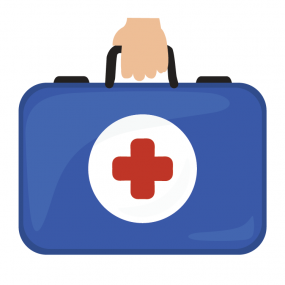HIV by Age: Prevention Challenges
Racism, discrimination, HIV stigma, transphobia, and homophobia negatively affect the overall health and well-being of many people. Additionally, poverty and educational levels may make it harder for some people to seek and receive high-quality health care, including HIV testing, treatment, and other prevention services. Addressing these social and structural barriers and encouraging safe and supportive communities can help improve health outcomes for people with or at risk for getting HIV.
Knowledge of HIV status. People who don’t know they have HIV can’t take advantage of HIV care and treatment and may pass HIV to others without knowing it.

Sexually transmitted diseases (STDs). Having another STD can increase a person’s chances of getting or transmitting HIV.
Knowledge and use of pre-exposure prophylaxis (PrEP). PrEP is highly effective for preventing HIV, yet PrEP coverage remains below national targets.
Viral suppression. People with HIV may experience challenges with achieving and maintaining viral suppression. Some of these challenges include missing HIV medical appointments, needing but not receiving other important health care services, or missing doses of HIV treatment.
-
- CDC. Diagnoses of HIV infection in the United States and dependent areas, 2021. HIV Surveillance Report 2021;34.
- CDC. Estimated HIV incidence and prevalence in the United States 2017–2021. HIV Surveillance Supplemental Report 2023;28(3).
- CDC. Monitoring selected national HIV prevention and care objectives by using HIV surveillance data—United States and 6 dependent areas, 2021. HIV Surveillance Supplemental Report 2023;28(4).
- CDC. HIV infection risk, prevention, and testing behaviors among persons who inject drugs—National HIV Behavioral Surveillance: injection drug use, 23 U.S. Cities, 2018. HIV Surveillance Special Report 2021;24.
- CDC. Sexually transmitted disease surveillance, 2021. Accessed April 26, 2023.
- National Institute on Aging. HIV, AIDS, and older people. Accessed April 26, 2023.
- CDC. Quality of life and HIV stigma—Indicators for the National HIV/AIDS Strategy, 2022–2025, CDC Medical Monitoring Project, 2017–2020 cycles. HIV Surveillance Special Report 2022;30.
- CDC. Behavioral and clinical characteristics of persons with diagnosed HIV infection—Medical Monitoring Project, United States 2020 cycle (June 2020–May 2021). HIV Surveillance Special Report 2022;29.